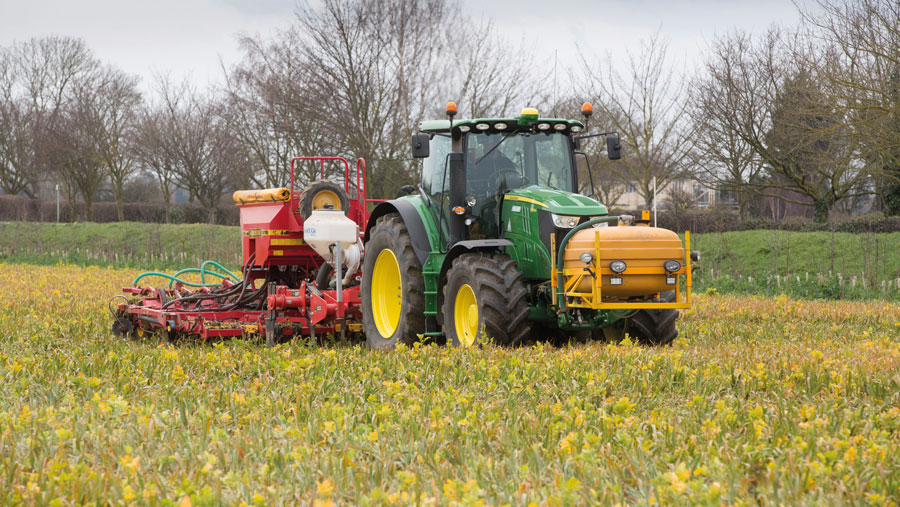SFI payment rates will not attract enough farmers, say analysts
 © Tim Scrivener
© Tim Scrivener Defra will have to increase payment rates for its Sustainable Farming Incentive (SFI) if it is to achieve its ambition of attracting more than 70% of farmers in England into the scheme, analysts say.
Research by the AHDB shows that, at present payment rates, most SFI standards will provide only a small financial benefit to many farmers when the costs of undertaking actions are included.
Farmers involved in stewardship schemes who are already undertaking some of the actions required and who do not have to take land out of production will benefit most.
See also: SFI fails to impress Farmer of the Year, but CS is a runner
The SFI is the first of three environmental programmes Defra is introducing under the Environmental Land Management scheme (ELMs).
These will replace the Basic Payment Scheme (BPS) and Countryside Stewardship, and pay farmers from the public purse for delivering environmental services.
Defra is working with more than 900 farms to test eight standards under the SFI pilot and develop the scheme through co-design.
The wider rollout will start in June to all farmers eligible for BPS and consists of three standards (under three-year agreements): arable and horticultural soils, improved grassland soils, and moorland.
AHDB’s latest Horizon report – Assessing the impact of the Sustainable Farming Incentive on farm businesses – aims to help farmers decide whether joining the scheme is financially viable for their specific circumstances.
Harper Adams tie-in
The report, conducted in partnership with Harper Adams University, models the likely effects on net profit of participating in SFI schemes using the AHDB’s virtual farm network and Defra’s published payment rates.
Analysis of the SFI 2022 arable and horticultural soils standard (intermediate) showed that the net payment for all three years on all three virtual arable farms was less than half the gross payment (£40/ha) when considering the costs, especially in year one, such as introducing multispecies green cover.
Overall net profit for all three virtual farms, after taking part in this intermediate standard, was around 1-2.5%.
The virtual farms had capacity to grow a cover crop without taking land out of production. But if land needs to be taken out of production to grow a cover crop, overall net profit falls by as much as 4%.
However, the SFI 2022 improved grassland soils standard fared much better in the analysis, increasing the virtual farm’s overall profit to between 6-8%.
‘Do your own sums’
AHDB senior analyst Amandeep Kaur Purewal said the key message was that the analysis was only a guide and profit levels would vary depending on each farm’s set-up.
“My advice for farmers is to do the calculations for themselves with their own farm,” she said.
NFU vice-president David Exwood said the AHDB’s analysis reinforced concerns that the current SFI offering would not be accessible for all farmers and the payment rates did not offer enough incentive to secure high levels of engagement.
“While there has been improvement to the standards, building on the pilot learning, there are still not viable options for all farmers,” Mr Exwood said.
A Defra spokesman said: “Our new schemes are all about supporting the choices that farmers make for their own holdings, and helping them boost their productivity and output.
“We have published further details of the SFI, including payment rates – and farmers will be able to stack standards on top of each other on the same parcel of land.
“We have increased Countryside Stewardship payment rates by an average of 30%, and we have increased funding for small technology grants to £48m which will enable applications from about 4,000 farmers to proceed.”
Farmers adopt wait-and-see approach to see if scheme stacks up
Researchers at Harper Adams University carried out 34 in-depth interviews with farmers to assess attitudes towards Defra’s SFI scheme and ELM programme.
They found that the views expressed were more negative than positive for both schemes, and many farmers had adopted a “wait-and-see” approach before deciding whether the schemes would work for their individual farm businesses.
On the positive side, farmers felt the schemes were going in the right direction, it was easy to take part in the introductory SFI schemes, and they recognised the need to change from intensive farming.
However, there was frustration over scheme design and a lack of trust in the government’s motivation.
One farmer said: “Yet again, it’s one-size-fits-all. There’s no flexibility, there’s no sense of valuing what you might already have on your own.”
Some said SFI payment rates were not attractive enough and better communication and clarity was needed from the government.
Thirteen of the farmers interviewed said they were taking part in Defra’s SFI pilot.
Many found the £5,000 learning payment for the first year, to provide 15 hours a month of learning activities, was particularly attractive.
Some of those who decided not to take part in the pilot said they did not think they could fill in the forms on their own or they did not believe it made financial sense.
More than half of the farmers surveyed (52%) had already made a plan or taken action to mitigate reductions in direct payments.
Diversification was the most favoured strategy to provide an extra source of income.
